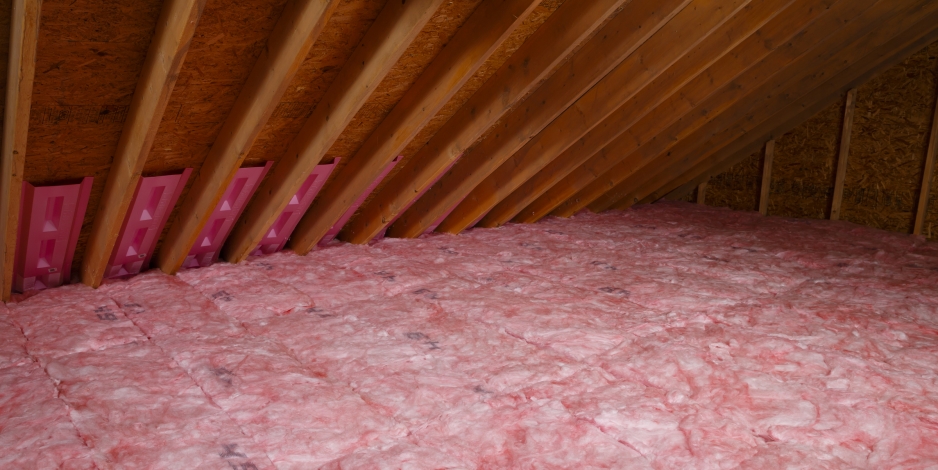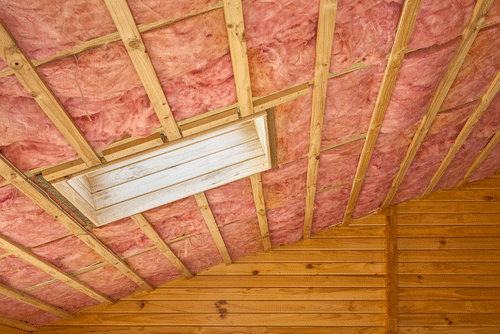Discover the Different Kinds Of Attic Insulation and Their One-of-a-kind Benefits for Your Home's Power Performance

Fiberglass Insulation
Fiberglass insulation is among the most generally made use of products for attic room insulation because of its excellent thermal efficiency and cost-effectiveness. Composed of little glass fibers, this material effectively catches air, producing a shielding barrier that assists keep consistent interior temperatures. Its high R-value per inch makes it especially reliable at resisting warmth transfer, which is essential for power preservation in homes.
Installment of fiberglass insulation is fairly uncomplicated, often offered in batts or loose-fill kinds, fitting different attic room configurations. In addition, it is non-combustible and resistant to moisture, minimizing the threat of mold and mildew growth. This resilience contributes to its durability, making fiberglass a sensible long-term investment for homeowners.
Furthermore, fiberglass insulation is commonly manufactured from recycled materials, which enhances its eco-friendliness. The product can likewise add to soundproofing, lessening sound transfer in between areas. While it is important to use safety equipment throughout installment to avoid inflammation from the fibers, the total advantages of fiberglass insulation, consisting of energy savings and environmental considerations, make it a prominent selection for improving attic performance and promoting a comfortable living environment.
Spray Foam Insulation
Spray foam insulation is a very reliable option for attic insulation, recognized for its superior air securing and thermal efficiency. This cutting-edge insulation material is made up of a mix of isocyanate and polyol resin, which, when incorporated, increases swiftly to fill voids and tooth cavities in the attic space. Its capability to abide by numerous surfaces makes certain a continual obstacle against air leakages, dramatically decreasing warm loss during colder months and heat gain throughout warmer periods.
One of the crucial advantages of spray foam insulation is its high R-value per inch, which suggests it supplies outstanding thermal resistance in a fairly thin application. This is specifically advantageous in attics where room is usually restricted. Furthermore, spray foam can aid lessen moisture buildup, lowering the danger of mold and mildew and mildew development, which can be destructive to both the structure and interior air quality.
While the initial price of spray foam insulation might be greater than typical alternatives, its long-lasting power cost savings, paired with enhanced convenience and improved home worth, make it a rewarding financial investment for home owners looking for boosted energy effectiveness. Attic Insulation DFW. Overall, spray foam insulation attracts attention as an effective remedy for enhancing attic room insulation
Cellulose Insulation

Cellulose insulation is a prominent choice for attic room insulation, mostly composed of recycled paper items treated with fire retardants. This eco-friendly choice is understood for its excellent thermal efficiency, efficiently lowering warmth transfer in both summer season and winter season. The dense structure of cellulose enables it to fill spaces and gaps in attic room areas, providing a smooth barrier versus air leaks.
Among the considerable advantages of cellulose insulation is its capability to withstand mold and pests, owing to the fire retardant therapies used throughout manufacturing. In addition, it boasts a high R-value per inch, which equates into exceptional power effectiveness. Homeowners can anticipate lower heating & cooling expenses as a result of boosted insulation.
Setup is typically achieved with blowing loosened cellulose right into the preferred area, enabling a reliable and quick procedure. This method also lessens disruption to the existing structure. Cellulose insulation has a reasonably low ecological influence, as its production process uses recycled products, adding to sustainable building methods.
Rock Woollen Insulation
Amongst the different choices for attic insulation, rock wool, likewise referred to as mineral woollen, stands out because of its impressive thermal and acoustic efficiency. Made from natural or recycled materials, rock woollen is created by thawing rock and rotating it into fibers, causing a product that uses superb insulation buildings.
Among the substantial advantages of rock wool insulation is its high R-value, which indicates its performance in withstanding warmth circulation. This characteristic not only improves energy efficiency but additionally contributes to maintaining a comfy interior temperature year-round. Additionally, rock wool is inherently fireproof, making it a much safer choice for homes as it can stand up to heats without melting or launching harmful fumes.
Moreover, rock wool insulation excels in soundproofing capacities, efficiently lowering sound transmission in between website link areas and from outside resources. On the whole, rock woollen insulation offers a thorough solution for improving power effectiveness, safety and security, and comfort in household setups.
Glowing Barrier Insulation
Glowing obstacle insulation functions as an effective service for decreasing warmth transfer in attics, particularly in warmer climates. This kind of insulation jobs by mirroring radiant heat away from living areas, therefore minimizing the quantity of heat that enters a home during warm weather condition - Attic Insulation DFW. Typically composed of an extremely reflective material, such as light weight aluminum foil, radiant barriers are installed in attics, dealing with the roof, where they can intercept incoming warmth from the sun
The main benefit of radiant obstacle insulation is its ability to lower cooling prices. By reflecting heat as opposed to absorbing it, radiant barriers can aid maintain an extra secure interior temperature, reducing the work on cooling systems. This performance translates right into reduced power costs and increased comfort for house owners.
In addition to energy savings, radiant barriers can also add to boosted interior air high quality. By decreasing heat build-up, they assist reduce humidity degrees, which can prevent mold growth and improve overall air flow. When installed correctly, glowing obstacle insulation can be an important addition to any kind of energy-efficient home, making it a deserving factor to consider for property owners wanting to enhance their attic room insulation technique.
Final Thought
To conclude, understanding the different sorts of attic room insulation-- fiberglass, spray foam, cellulose, rock wool, and glowing barriers-- enables property owners to make educated decisions regarding power efficiency. Each insulation type provides unique benefits, such as remarkable thermal resistance, wetness management, and audio attenuation. By picking the ideal insulation material, substantial reductions in power prices can be accomplished, along with improvements in indoor convenience. Inevitably, the right selection contributes to an extra sustainable living setting and promotes overall energy preservation.

In conclusion, comprehending the various kinds of attic insulation-- fiberglass, spray foam, cellulose, rock wool, and glowing barriers-- allows homeowners to make informed choices relating to power efficiency.